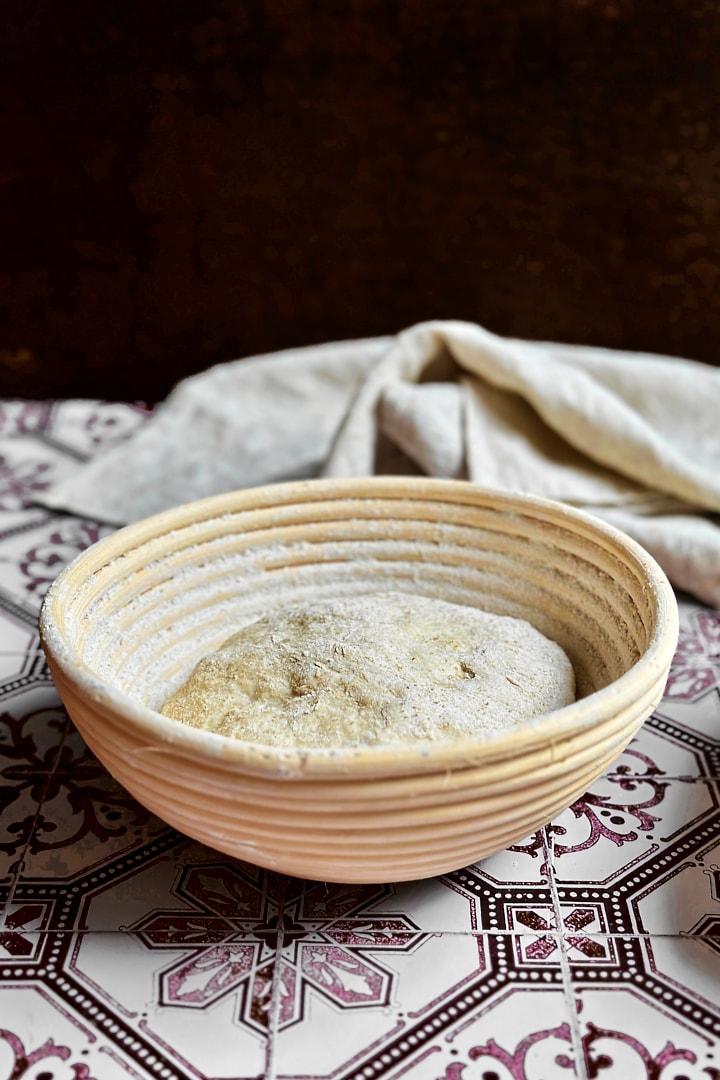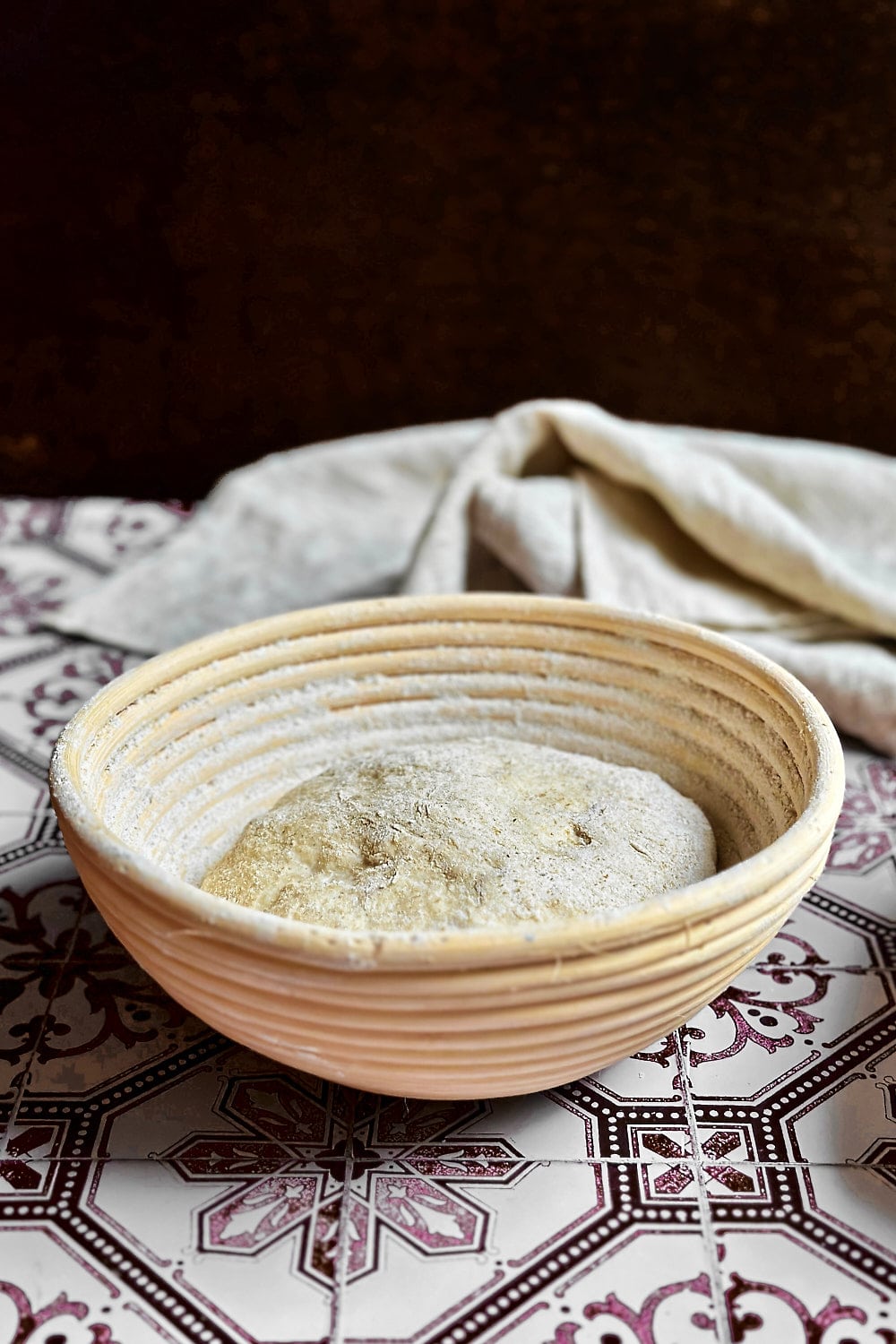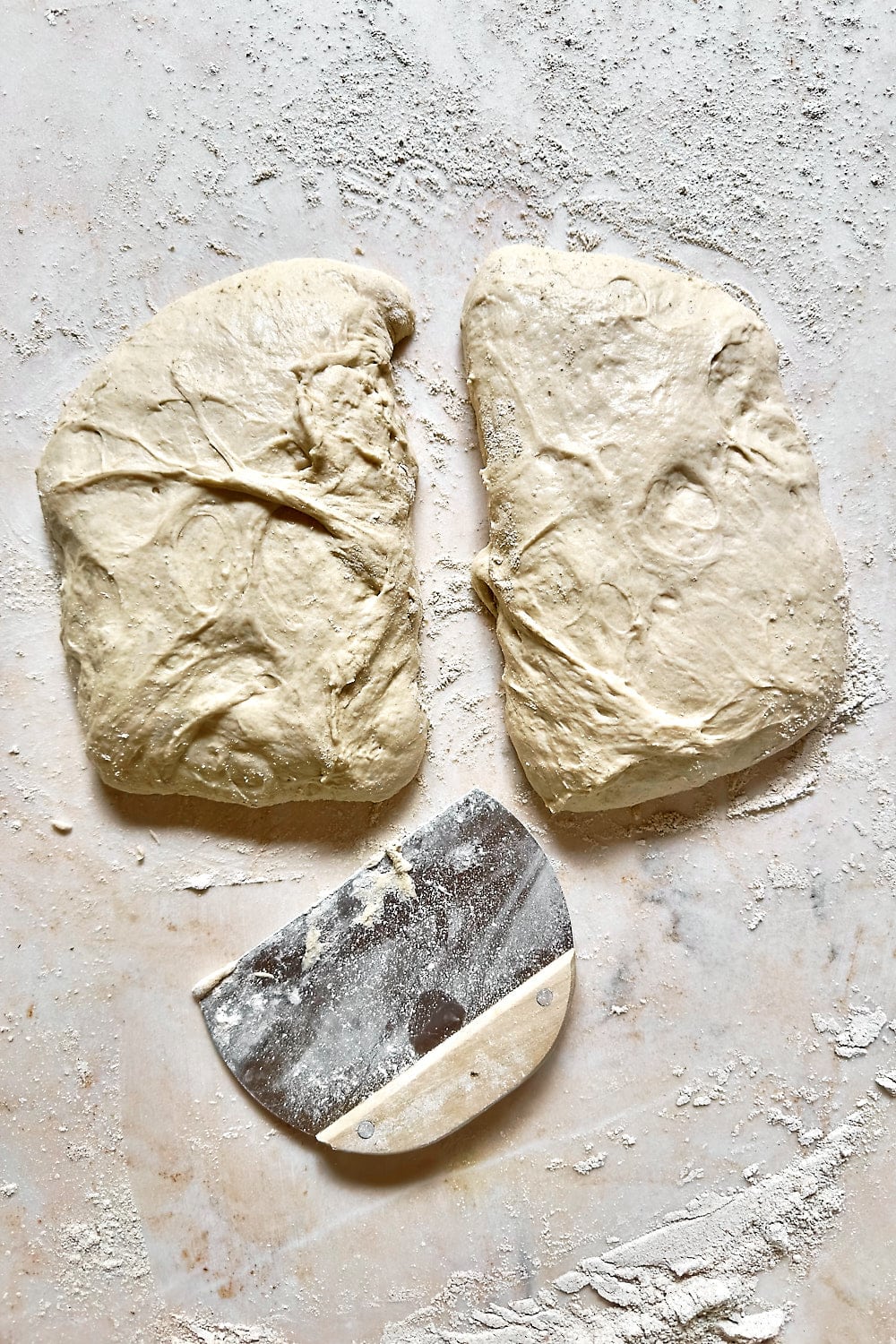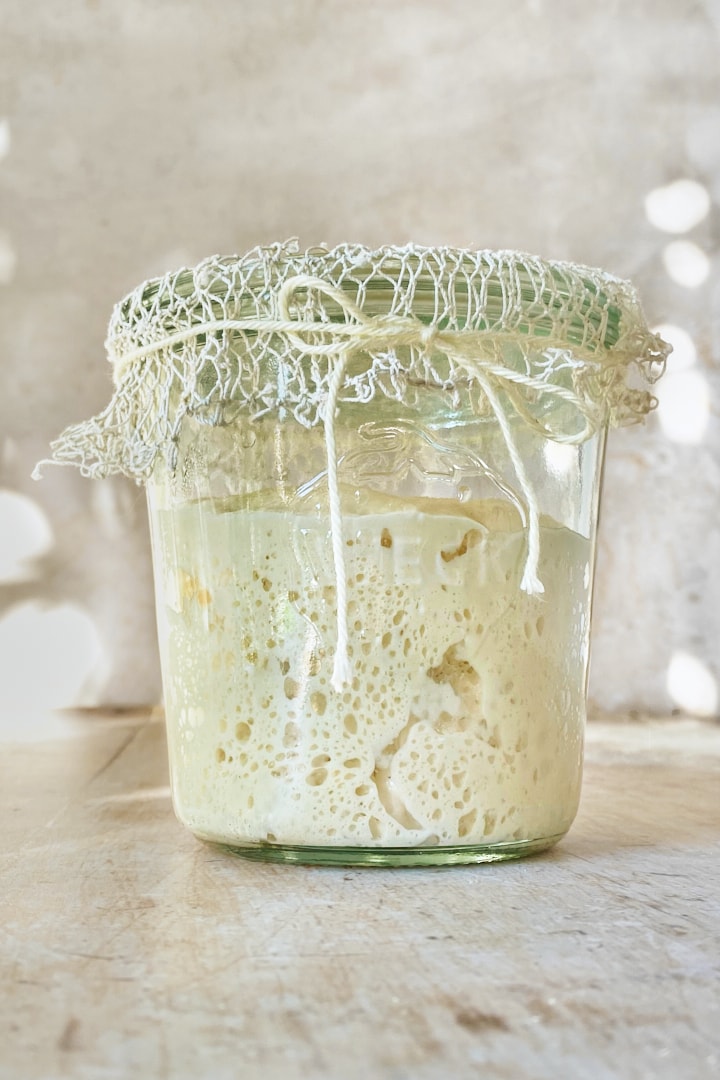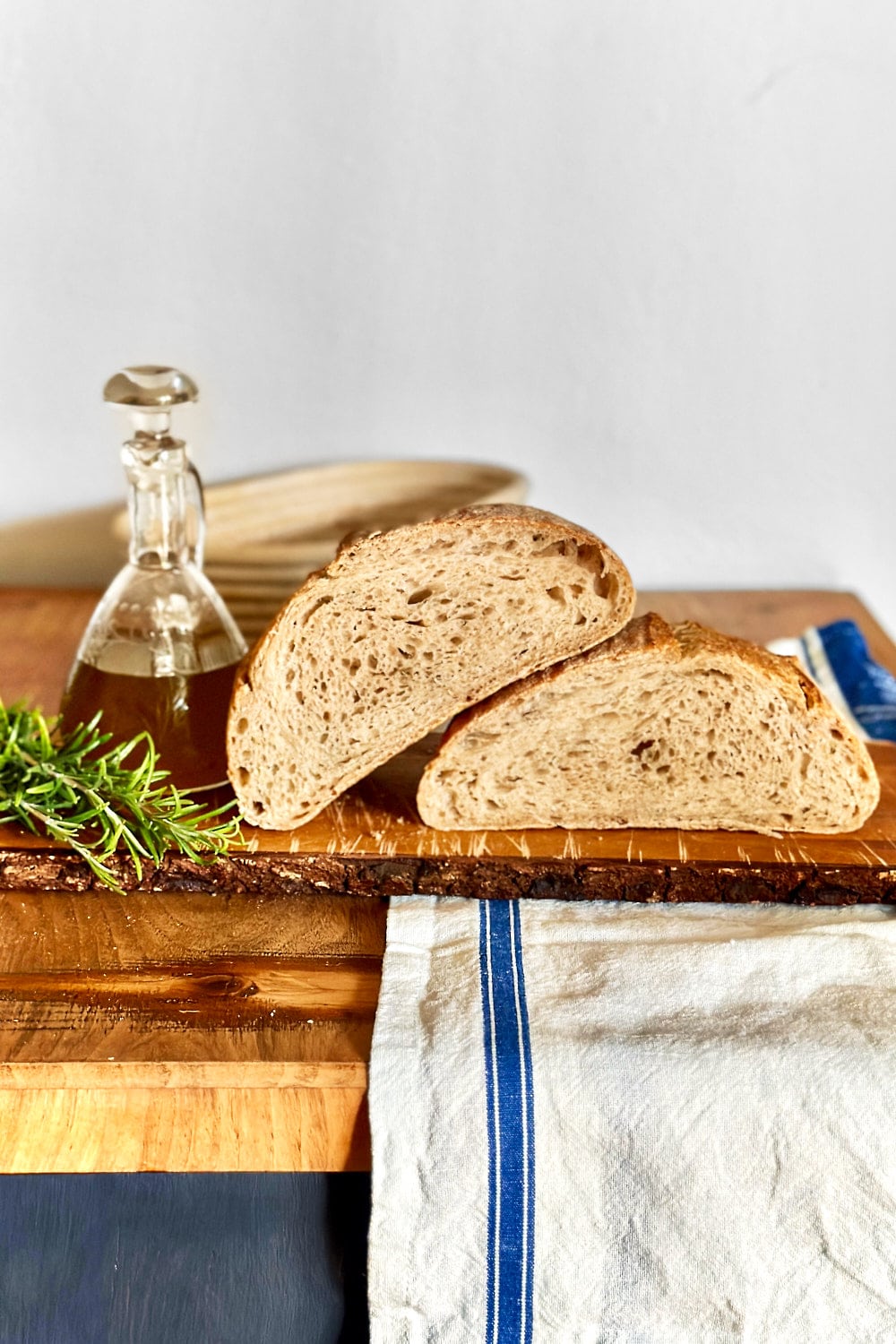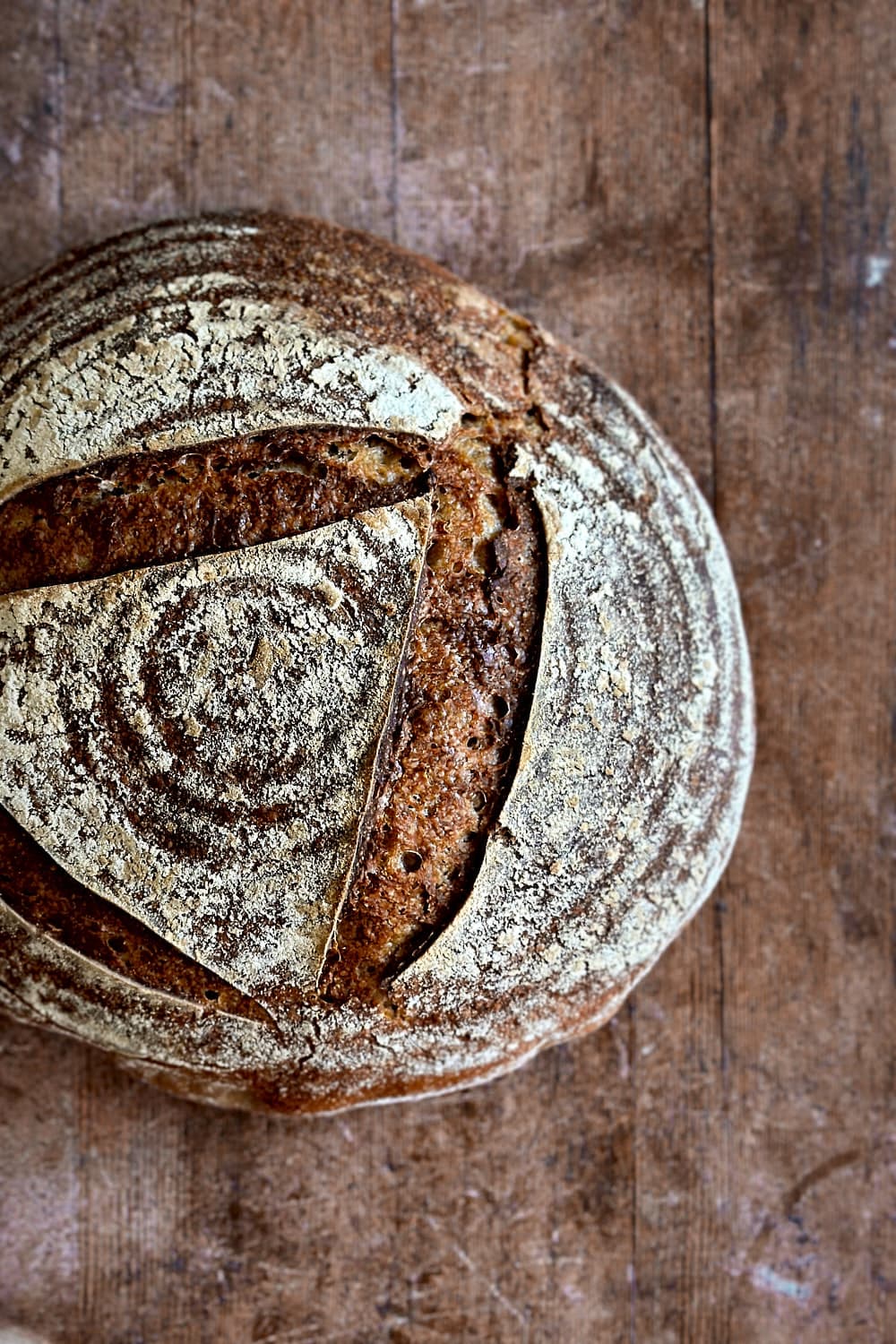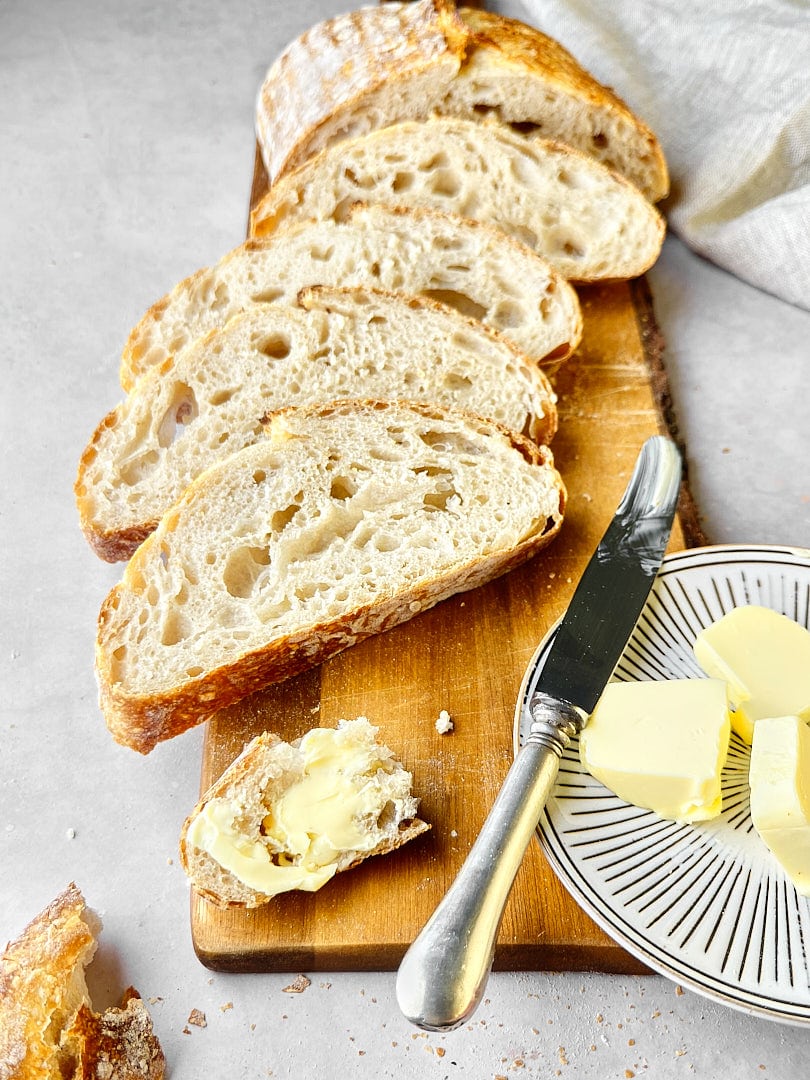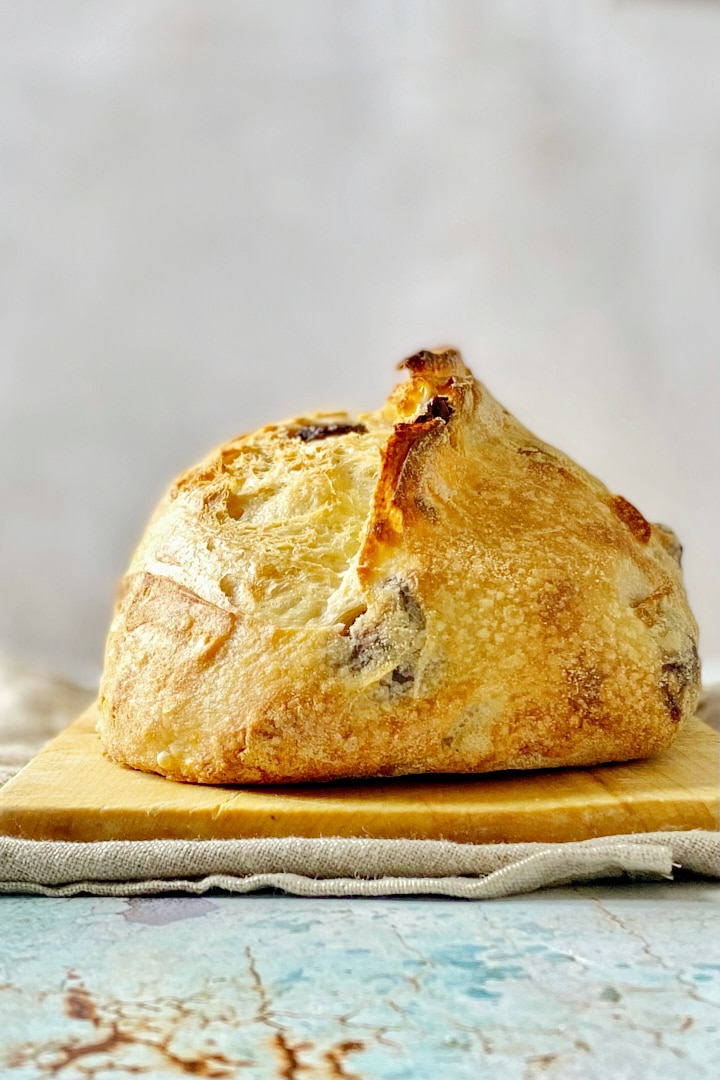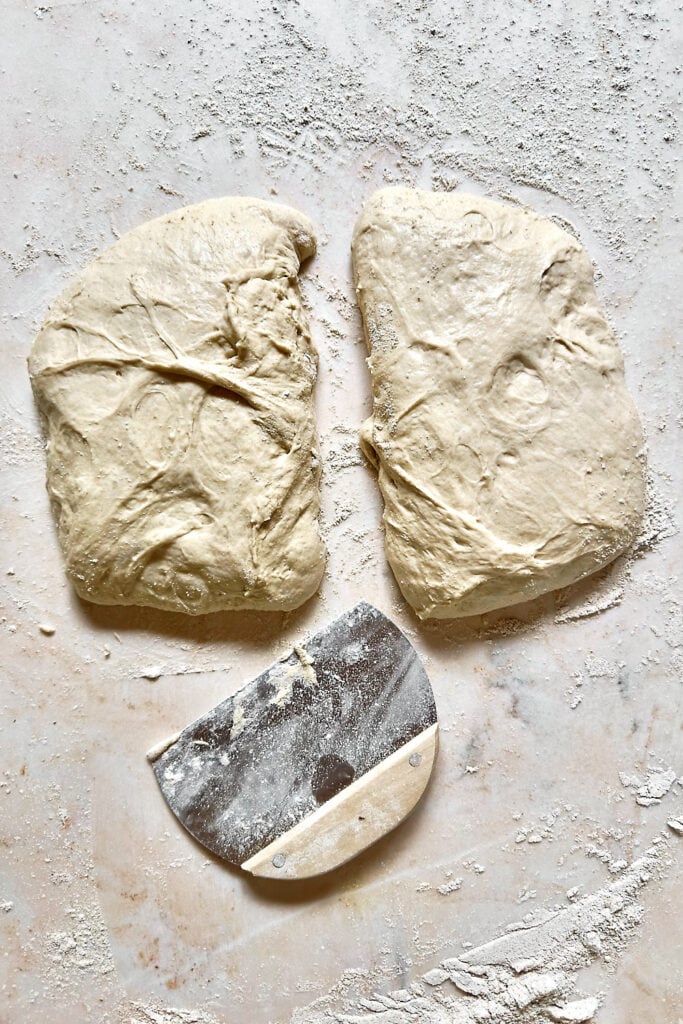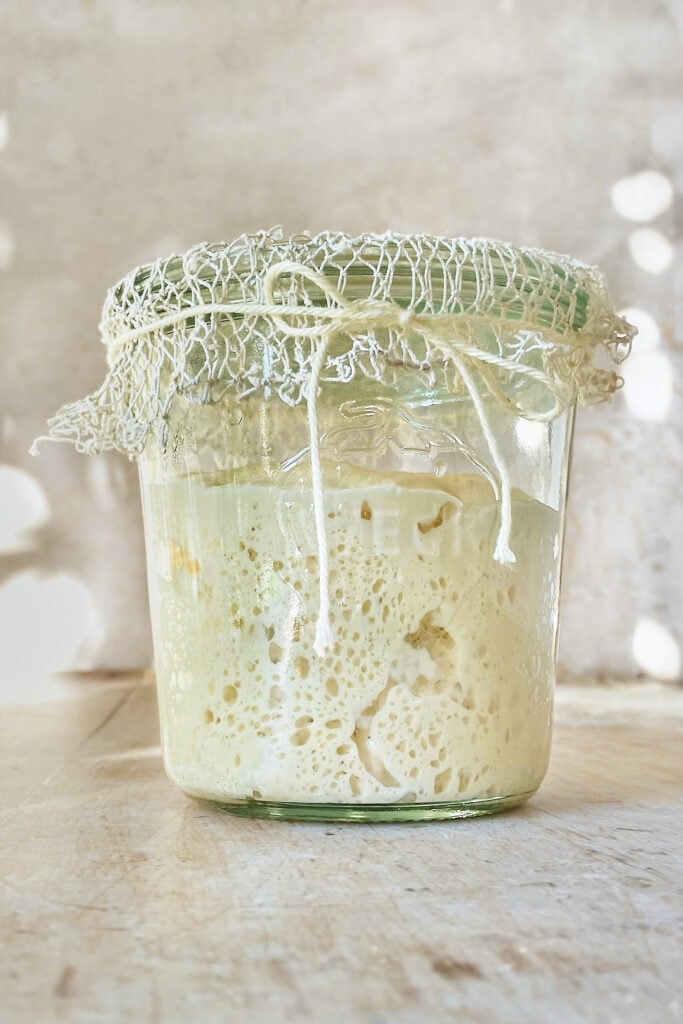How to Shape Sourdough | Easy Guide for Round and Oval Loaves (with Videos)
Two easy methods to shape sourdough into round and oval loaves. Properly shaping homemade sourdough bread is key to achieving beautiful artisan-style loaves. It’s an important step in the bread making process and helps to create sufficient structure in the dough, which in turn affects the final texture and appearance of the bread. During shaping, the dough is gently stretched and folded to create surface tension. This tension helps to trap the gases produced by the wild yeasts and bacteria during fermentation and contributes to a good rise and an open crumb structure.
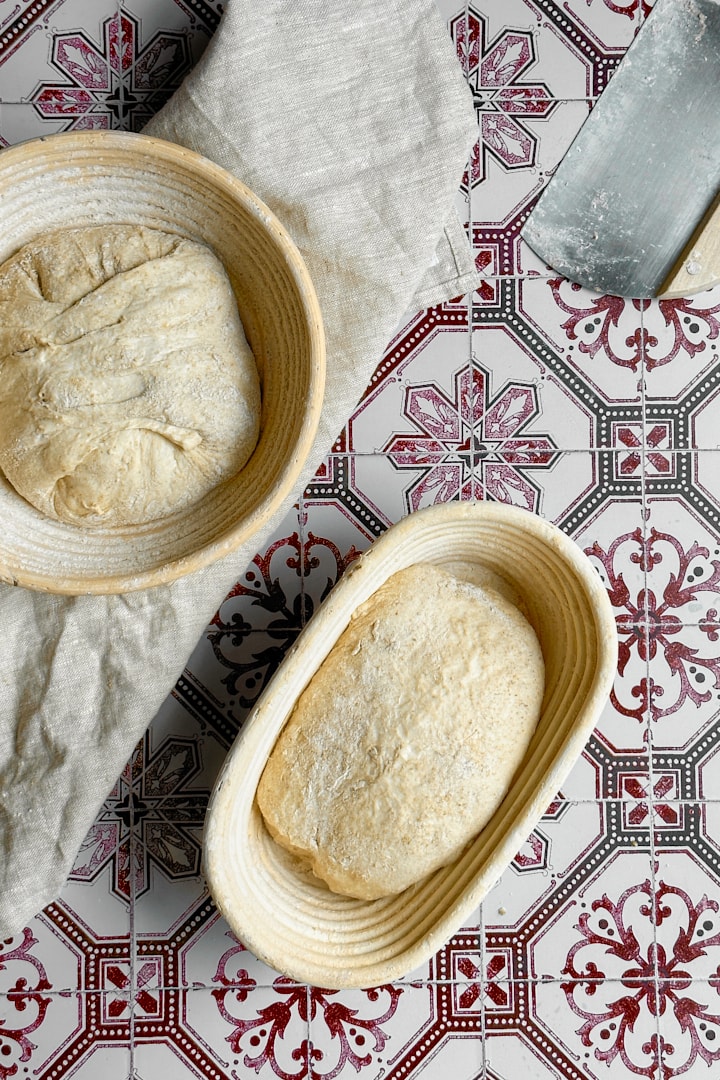
Tools and Equipment
- Dough scraper – to help shape and handle the dough.
- Banneton baskets – round and oval, to help the dough maintain its shape during proofing.
- Rice flour or whole wheat flour – to dust the bannetons. This is especially important for sticky rye doughs and high-hydration doughs.
- Tea towel – to cover the dough while resting.
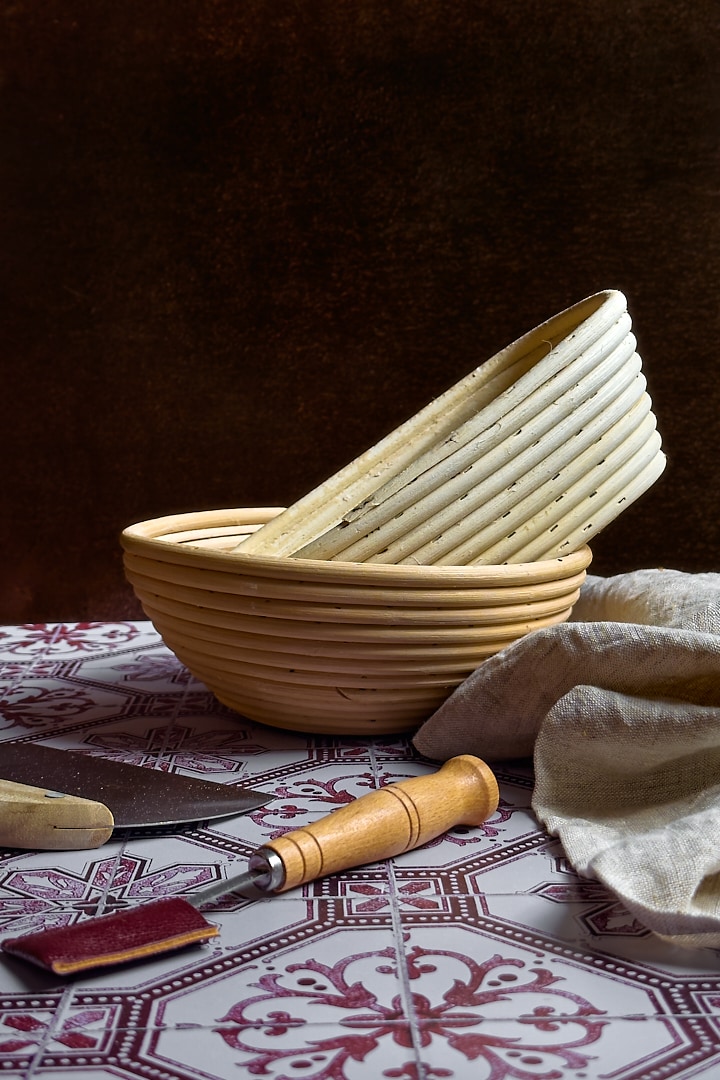
Step-by-Step Instructions
How to divide and pre-shape the dough:
Dividing the dough only applies if you made a large batch of dough for multiple loaves. The idea is to divide the dough into smaller pieces with a more manageable size and to shape them into loose rounds. After the bulk fermentation, turn the dough out onto your work surface. If your dough feels sticky, you can lightly flour the work surface or spray it with a fine mist water bottle to prevent sticking. However, avoid using too much flour, as this may dry out the dough and interfere with the shaping process. Using a bench knife, divide the dough into equal portions and shape them into loose rounds. To do this, fold the edges of the dough towards the center, overlapping each other. Continue folding until you have created a rounded shape. Flip the dough over with the seam-side down. Then, rotate the dough with your hands in a circular motion, gently pulling the dough towards you. This helps to create a smooth, round dough ball with surface tension. Cover the dough with a damp tea towel and let it rest on the bench for 20 – 45 minutes. This allows the gluten to relax and makes it easier to handle the dough during the final shaping.
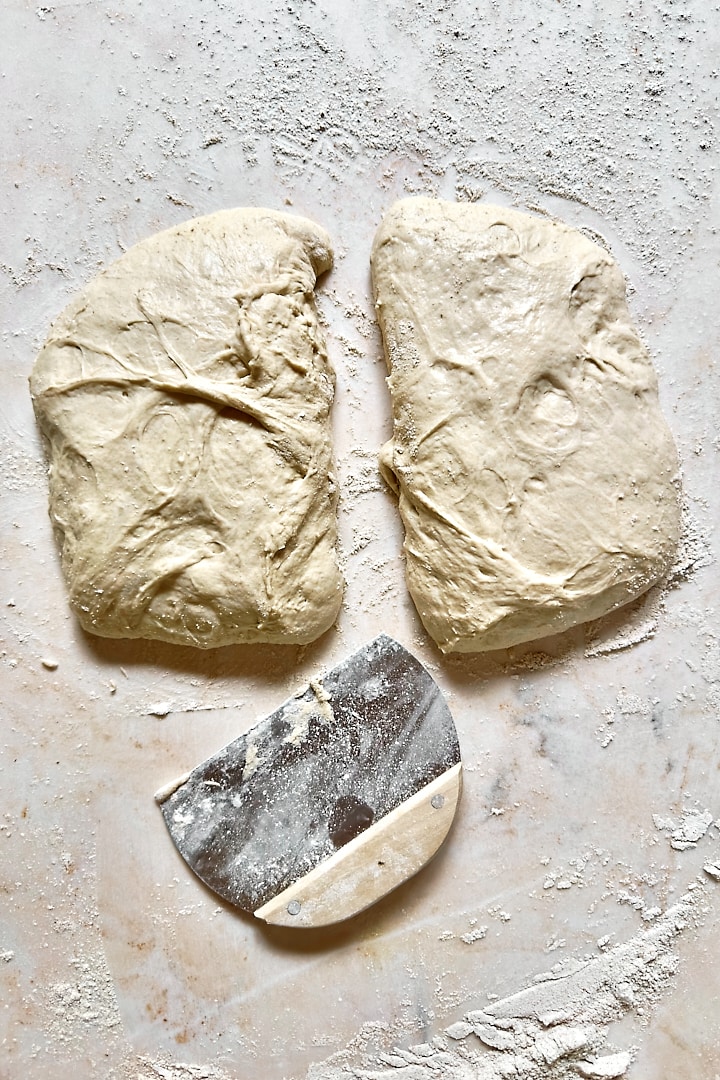
How to shape an oval sourdough loaf (a “batard”):
„Batard“ is the French term for an oval loaf. After pre-shaping and bench resting, flip the dough over again with the seam-side facing up. Gently flatten the dough into a rough rectangle. Fold the bottom edge of the dough up towards the center. Repeat with the left and right side. Then, fold the top down towards the middle, to create an even package. Lastly, roll the dough up on itself into a tight cylinder. Let it sit on the counter for a few minutes with the seam-side down, and lightly dust the surface of the dough with flour. Also flour an oval proofing basket (called a banneton) with rice flour or whole grain flour to prevent sticking. Using a bench scraper, flip the dough over and transfer it to the banneton. The seam-side should now be facing up again. You can pinch the seam together with your fingertips to make sure it’s evenly sealed. Let the dough rest in the basket for the final proof until ready to bake. When the dough has finished proofing, turn it out on a piece of parchment paper. Use a sharp serrated knife or razor blade to score the top of the dough. Scoring the bread contributes to good oven spring and allows the bread to rise and expand properly in the oven. Bake the bread according to the recipe in a pre-heated Dutch oven or in a steam oven until the loaf sounds hollow when tapped on the bottom and has a crispy crust.
How to shape a round sourdough loaf (a “boule”):
A round loaf is called a “Boule” in French. Shaping a round loaf is similar to the steps during pre-shaping, but this time you want to create more surface tension. After pre-shaping and bench resting, flip the dough over again with the seam-side facing up. Gently flatten the dough with the palm of your hand. Fold the edges of the dough towards the center, rotating the dough slightly with each fold. Do this until you’ve created a tight, rounded shape. Flip the dough over again. Using both hands, gently rotate the dough in a circular motion, tucking the edges underneath to create more surface tension. Once you’ve created a round shape with a smooth, taut skin, transfer the dough to a round banneton with the seam-side facing up. Pinch the seam together with your fingertips and make sure it’s evenly sealed. Let the dough proof in the basket at room temperature or overnight in the fridge before baking. When the dough has finished proofing, turn it out on a piece of parchment paper. Use a sharp serrated knife or bread lame to slash the top of the dough. This allows you to create a decorative pattern on the loaf. For a more rustic result, you can skip the scoring and let the bread burst open organically. Bake the bread according to the recipe in a pre-heated Dutch oven or steam oven until the crust is golden brown and the loaf sounds hollow when tapped on the bottom.
